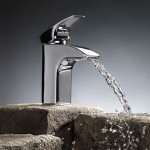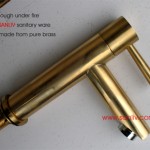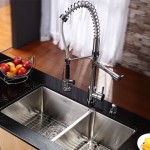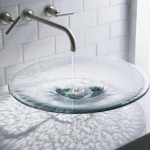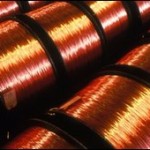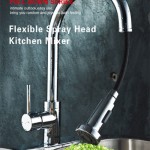Kitchen and Bathroom Faucet manufacturing process: Kitchen Faucet and Bathroom Mixer Taps are used frequently everyday. But the faucet production process or manufacturing process is hardly to know. Sanliv faucet manufacturer guide you to learn more about faucet.
Sanliv Faucet Manufacturing Process
Due to continuous automation, the manufacturing process of faucets have become easier. Productivity and efficiency over the years have increased continuously due to computers involved in production. The basic process involved are forming, finishing and final assembly.
Raw Materials
Brass, an alloy of copper and zinc, is the most widely used material for faucets due to its resistance to soft-water corrosion and hard-water calcification. It usually contains some alloying elements—like bismuth—to make it easier to process. Brass is received as bar stock of 0.13-2 in (0.33-5 cm) in diameter, depending on the size of faucet. The majority of the other components that make up a faucet are made of other metals or ceramics and are received as finished parts from other manufacturers.
Faucet Designs: To meet a variety of consumers’ needs, faucets come in a wide range of styles, colors, and finishes. Ergonomic designs may involve a longer spout length and easier to operate handles. The shape of the faucet and its finish will affect the manufacturing process. Some designs will be more difficult to machine or forge than others. A different finishing process may be used to achieve a different look.
For the homeowner, special finishes are available, including brushed nickel, polished nickel, satin black, gold, platinum, and a variety of colors. Consumers also now customize the look of the faucet, combining more than one type of finish. Warranties are longer and more features are available. Prices to the consumer ranged in the spring of 2000 from $40 all the way up to $500.
The Manufacturing Process
Faucet manufacturing process has become highly automated, with computers controlling most of the machines. Productivity and efficiency have thus improved over the years. The basic process consists of forming the main body of the faucet (some-times including the spout if no swivel is needed), applying a finish, and then assembling the various components, followed by inspection and packaging. The faucet industry has also been impacted by environmental regulations, which have required special processes to be developed.
Forming
There are two methods used to make the faucet bodies. Most manufacturers use a machining process to shape the body into the required size and dimensions. This involves first cutting the bars into short slugs and automatically feeding them into a computerized numerically controlled machining center of multi-spindle and multi-axis design. This machine performs tuming, milling, and drilling operations. It typically takes about one minute to make a part.
Larger faucets may require numerous machining operations. For instance, over 32 machining operations are required for some kitchen faucet bodies using a rotary machining center. With the proper machine, it can take as little as 14 seconds to make a part. Some parts, such as cast spouts for kitchen faucets, are also machined in a separate operation before assembly.
Some faucet manufacturers use hot forging instead of machining, since this method can produce a near-net shape in about three seconds with little waste. Forging is the process of shaping metals by deforming them in some way. In hot forging, heated metal is forced into a die that is almost the same shape as the faucet body. The pressure is slowly increased over the course of several seconds to make sure the die is completely filled with metal. Only minor machining is required to produce the exact dimensions.
Finishing
- After machining, the parts are ready for the finishing process. Those components that come into contact with water may first require a special surface treatment to remove any remaining lead. This involves a leaching process that eliminates lead molecules from the brass surface. The conventional finish is chrome since this material is most resistant against corrosion. First a base coating of electroplated nickel is applied, followed by a thin coating of electroplated chromium. The chrome layer is deposited from a plating bath containing certain additives that improve corrosion resistance.
- If brass plating is used, a clear polymer coating is applied to improve durability. For white and other colored finishes, a similar polymer or epoxy plastic with color added is sprayed onto the faucet in an electrically charged environment. Both coatings then are heat cured.
- To achieve a polished brass look, physical vapor deposition is used, which applies the metal coating in a vacuum chamber. This chamber has four components: a vacuum pump to provide a controlled environment free of contaminants; a tank that emits several types of gases; a target rod acts as the metal source; and racks to hold the faucet parts. The target is made of a corrosion-resistant material such as zirconium.
- An electric arc heats the target to vaporize the material, then strikes the surface of the faucet at high speed and reacts with the mixture of gases. One gas provides the color and another provides the corrosion resistance. As the target material combines with these gases, it adheres to the faucet part, creating a bond that is virtually indestructible. Some manufacturers use a spiral coil around the target to provide a uniform distribution of the coating.
Assembly
- After plating, the parts are stored in bins until assembly. Assembly can involve both manual and automated processes. For some faucets, prelubricated rubber seals or o-rings are installed by hand.
- Finally, the faucets and other components are sent for final assembly. This process takes place on rotary assembly machines, which are precisely controlled, or by robots. The sprout, if separate, is first installed, followed by the ceramic cartridge. This cartridge is screwed in place with a brass using a pneumatic gun, and then the handle is attached by hand. Sometimes the copper tubes are installed before assembly. After assembly, the faucets are packaged in boxes along with any other components that are needed for final installation.
Quality Control
After the first part is machined, it is checked against the blueprints to ensure it matches all dimensions. A go-no-go gauge is used to make sure the interior and exterior threads fit together. Since machining is automated, random samples are then checked for the more critical dimensions. Before plating, parts are visually checked for surface imper-fections, which are removed by sanding. After final assembly, every faucet is pressure tested with air for leaks and tested for durability.
Faucets must also pass several environmental regulations. The National Sanitation Foundation 61 regulation, which limits contaminants in drinking water (lead is lIppb [parts per billion] in water from endpoint devices), applies to kitchen faucets, lavatory faucets and drinking water dispensers. Other laws are more strict—California’s Proposition 65 limits the allowable lead to 5 ppb for a consumer faucet. There are also plumbing codes to deal with, which can vary from city to city. Many now require antiscald tub and shower faucets.
To receive NSF Certification of a faucet, manufacturers first submit a list of all materials including the formulation used in the product. NSF Toxicologists then review the material formulations to determine potential contaminants that may extract from the faucet and into the drinking water. NSF then conducts an inspection of the manufacturing facility to verify material formulations, material suppliers, quality control procedures and operations. Product samples are randomly selected for testing at NSF laboratories.
Faucets undergo a rigorous three-week testing sequence, where they are filled with an extractant water specified in the Standard. Selected water samples are analyzed for contaminants. NSF toxicologists compare the contaminant levels to the maximum allowable levels established in ANSI/NSF Standard 61. If all contaminant levels of the product meet the requirements of the Standard, the product can be certified. Only then is the manufacturer allowed to display the NSF Mark on the product signifying NSF Certification. To become certified, some manufacturers have had to completely modify their manufacturing process, such as switching to a purer brass material or adding a finishing rinse process.
Byproducts/Waste
Scrap metal from the machining or forging process is recycled. The finishing processes may produce waste material that must be disposed of or minimized by recycling. Since the majority of processes are automated, waste is minimized.
The Future
Faucet manufacturers will continue to add value and quality to meet consumers’ increasing demands. The number of styles and range in prices will expand, with higher end products becoming more popular as remodeling intensifies. Europe will continue to remain ahead of the United States in the design department, offering more modern styles and colors. Although the overall manufacturing process will remain about the same, more automation will be used.
Novel finishes produced using PVD technology will become more widely available as consumers recognize these finishes can offer both style and durability. This may require manufacturers to improve the economics of the process, since it is more expensive than chrome plating. The popularity of filtration will extend to faucets, as consumers realize the benefits of built-in filters. Eventually these types of faucets will become the norm.
The trend toward battery-operated electronic faucets is expected to continue, and with an overall drop in prices, commercial markets should expand. Technology will continue to improve, making these faucets easier to repair and with improved operation due to fiber optics. With such improvements in technology and price, the electronic faucet will soon enter even the residential market.
Overall, the plumbing industry will continue to consolidate and manufacturers will therefore have to remain flexible. The Internet will continue to play a role in the market and someday faucet manufacturers may even sell their products online directly to the consumer.


